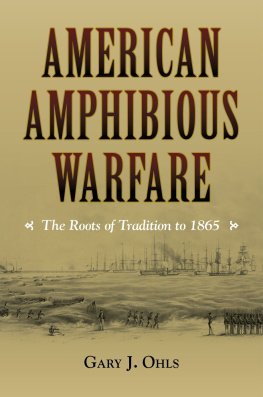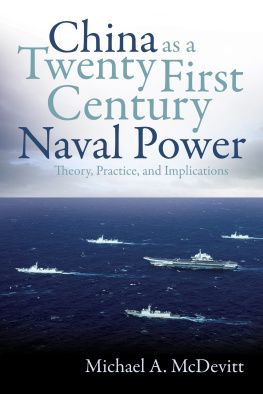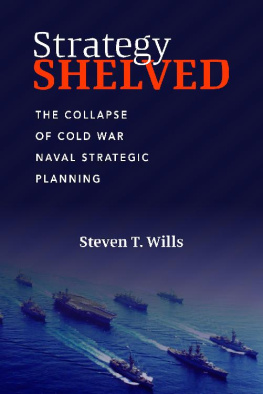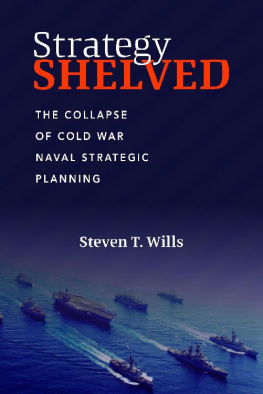

SAM J. TANGREDI
NAVAL INSTITUTE PRESS
ANNAPOLIS, MARYLAND
Naval Institute Press
291 Wood Road
Annapolis, MD 21402
2013 by Sam J. Tangredi
All rights reserved. No part of this book may be reproduced or utilized in any form or by any means, electronic or mechanical, including photocopying and recording, or by any information storage and retrieval system, without permission in writing from the publisher.
Library of Congress Cataloging-in-Publication Data
Tangredi, Sam J.
Anti-access warfare : countering A2/AD strategies / Sam J. Tangredi.
pages cm
Summary: This is the first book to examine the concept of anti-access and area denial warfare, providing a definitive introduction to both conceptual theories and historical examples of this strategy. Also referred to by the acronym A2/AD, anti-access warfare has been identified in American strategic planning as the most likely strategy to be employed by the Peoples Republic of China or by the Islamic Republic of Iran in any future conflict with the United States. While previous studies of the subject have emphasized the effects on the joint force and, air forces in particular, this important new study advances the understanding of sea power by identifying the naval roots of the development of the anti-access concept. Rather than arguing against the reliance on maritime forcespresumably because they are no longer survivableTangredi maintains that history argues that maritime capabilities are key to countering anti-access operations. Provided by publisher.
ISBN 978-1-61251-187-0 1. Sea control. 2. StrategyCase studies. 3. Unified operations (Military science)Case studies. 4. Defensive (Military science) I. Title. II. Title: Countering A2/AD strategies.
V165.T38 2013
359.422dc23
2013022627

 Print editions meet the requirements of ANSI/NISO z39.481992
Print editions meet the requirements of ANSI/NISO z39.481992
(Permanence of Paper).
21 20 19 18 17 16 15 14 13 9 8 7 6 5 4 3 2 1
First printing
Contents
Tables
Figure
T his is admittedly a book written with an America-centric point of view. It is a point of view for which I make no apologies becauseunlike many of my counterparts in the academic worldI believe that there is no such thing as value-free or value-neutral research in international relations or any other social science. Rather, all social science scholarshipthat is the study of humanityis affected by the personal beliefs, or biases if one wants to use the pejorative term, of the researcher. This is true no matter how inclusive the bibliography or sources of research. Humans can never be neutral about humans. This is not an idea that originated with me; one of my more influential graduate professors, a man who had previously spent his lifetime trying to define foreign policy research as a hard science, taught me this wisdom from his own disappointment. Rather than pretend the research to be value-free, he urged, the researcher should be value-explicit. Making ones biases known allows the reader to place the research and analysis into context and therefore better judge its validity. Accepting this, I can point out my biases very succinctly: I hold a lifelong commission as an officer in service of the United States. I may no longer be serving on active duty, but the national security of the United States and its allies has been my lifes work and remains my professional focus. This book is a scholarly work in which all sources available to me and all points of view have been researched, but ultimately the reader must remain aware that my conclusions and recommendations necessarily reflect this lifelong mission.
My naval and academic careers have been full of shipmates, colleagues, teachers, mentors, and friends, many of whom have had direct or indirect effects on my studies of anti-access strategies and related defense issues. It is not mere rhetoric to say that they are too many to name, and I know that acknowledging some means that others will be necessarily unacknowledged. So, instead, I will confine myself to first acknowledging my gratitude to the executive leadership of Strategic InsightBob Gray, Jim Francis, and Jim Rubinwho allowed me time off from my regular work responsibilities to complete this book. Most importantly, I give my continuing gratitude to Rev. Dr. Deborah Mariya, veteran of Desert Shield/Desert Storm, and our daughter Mercy, whose access to the futureI praywill always be peaceful.
A nti-access and area denial are modern terms referring to war-fighting strategies focused on preventing an opponent from operating military forces near, into, or within a contested region. Today anti-access and area-denial strategiessometimes combined as anti-access/area denial or abbreviated as A2/ADare topics of great debate and are considered primary strategic challenges to the international security objectives of the United States and its allies and partners. However, in addition to anti-access and area denial being modern terms and strategic challenges, I would argue that they constitute an ancient conceptthat they are techniques of strategy that have been used throughout military history. They are also historical components of grand strategy. This book is an attempt to illustrate this history, identify the principal elements of the concept, assess their relative success or failure, andin terms of the policy objectives of the United States and its allies and partnerssuggest ways in which future strategic challenges might be overcome.
Denying access to an enemy is a natural objective for any defender and should be considered an integral component of any military campaign. However, the terms anti-access and area denialas currently usedare specifically meant to denote a strategic approach intended to defend against an opponent that is judged to be of superior strength or skill in overall combat operations. If the opponent is allowed to use this superior strength or skill, it is feared that the defender would likely be defeated at the point of contact. Therefore, the objective of an anti-access or area-denial strategy is to prevent the attacker from bringing its operationally superior force into the contested region or to prevent the attacker from freely operating within the region and maximizing its combat power.
In the terms of one school of military theory, anti-access and area denial can be described as strategies intended to prevent an attacker from being able to bring forces to bear in a strike at a defenders center of gravity. From this perspective, without striking the center of gravity the attacker can never achieve victory. For the defender, the desired result is not just stalemate, but also attrition of the attackers forces such that the attacker loses over time any ability to make any decisive strike at the center. Using chess as the metaphor, we can see it as a strategy focused on preventing the loss of ones own king via a perpetual stalemate. But in terms of technique, the stalemate is best achieved by knocking all the opponents pieces from the board before the start of the game and then preventing the opponent from putting them back on. The defender fears or suspects that if he actually lets the game proceed, he will face defeat. In this scenario, the better chess player cannot win because she cannot play her pieces.
Next page










